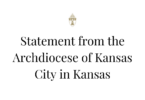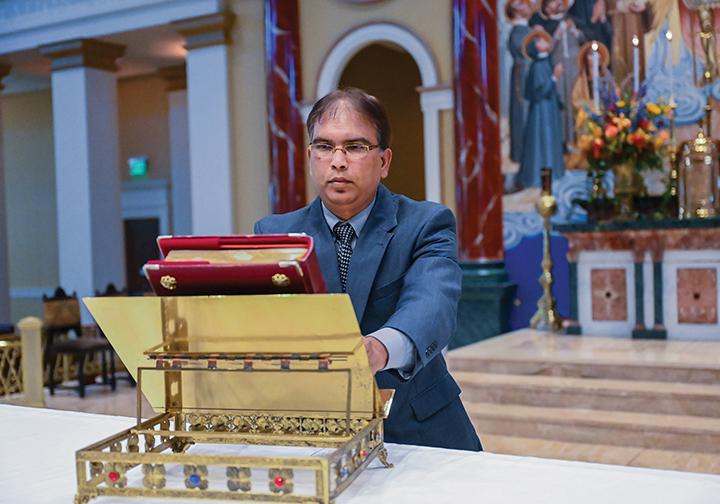
by Joe Bollig
joe.bollig@theleaven.org
KANSAS CITY, Kan. — While he was growing up in India, John Lawrence and his siblings were fairly marinated in the Catholic faith by their parents.
That meant daily Mass, catechism study, the Legion of Mary and a rich devotional life — especially the rosary.
But later, when he was trying to determine a direction in his life, Lawrence got some surprising direction from his father.
“After I finished my college, I had interest in becoming a priest,” said Lawrence. “I approached my dad. I talked to a few other priests. They encouraged me, but my dad did not encourage me.
“Because I was the only one studying engineering . . . my parents thought I would be the breadwinner for the house. They did not allow it; they did not encourage me to go to the priesthood.”
The door to being a cleric was firmly shut.
Dutiful son that he was, he continued his education, consented to a traditional arranged marriage and took up the vocation of marriage and family.
Eventually, Lawrence and his wife Acushla Anthony moved to the United States (he in 2005, and she in 2007) to pursue education and their respective careers. They joined St. Michael the Archangel Parish in Leawood in 2019.
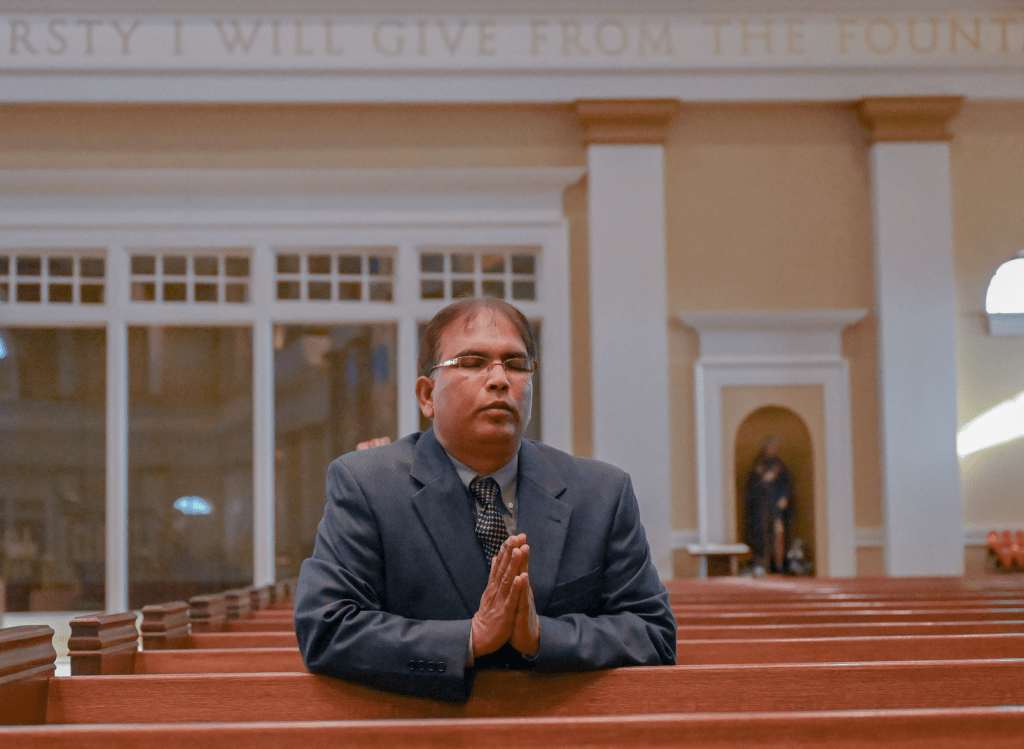
It was there that he discovered the permanent diaconate — one of the three orders of cleric in the Catholic faith. He signed up.
“At St. Michael the Archangel, they have two great deacons,” said Lawrence. “They influenced me a lot.”
Lawrence is one of 20 men who make up the fifth cohort of those exploring whether they are called to become permanent deacons for the Archdiocese of Kansas City in Kansas.
The aspirants of Cohort Five received their letters of acceptance in June and had their first weekend formation event Sept. 9-11.
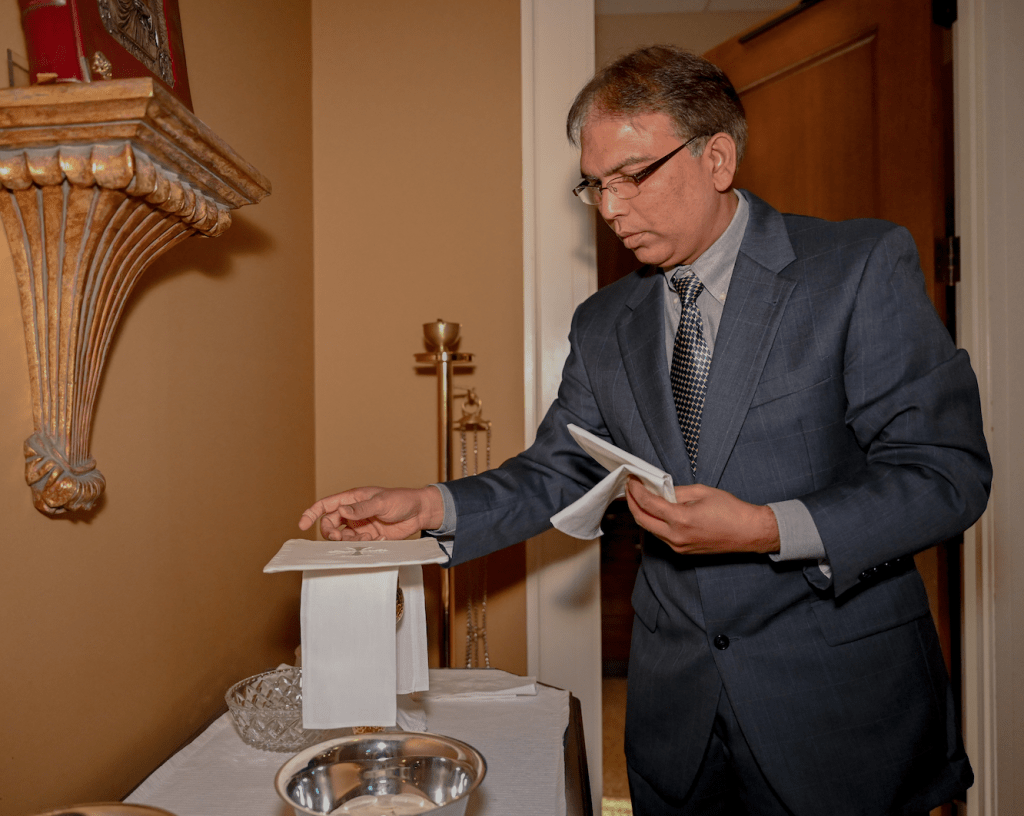
New permanent deacon cohorts are formed every three years. Since Cohort One was ordained in 2011, the number of permanent deacons serving in the archdiocese has increased to nearly 60. It’s a fluid number because some permanent deacons move to the archdiocese, some move away or die and some cease their ministry.
Despite slightly more than a decade of experience with permanent deacons in the archdiocese, some laypeople aren’t sure who they are or what they do, said Leon Suprenant, co-director of the archdiocesan office of the permanent diaconate.
“We try to inculcate in the men a diaconal imagination,” said Suprenant. “We want them to think outside the boundaries of the parish. Some deacons will be assigned to the parish and mostly they’ll assist the pastor.
“But deacons are meant to be at the cutting edge of evangelization, working with marginalized communities like prisoners, the homeless and patients in hospitals — all these places outside the sanctuary where the priests operate. The diaconate is a bridge between the church and the world. Deacons are clerics living a lay life.”
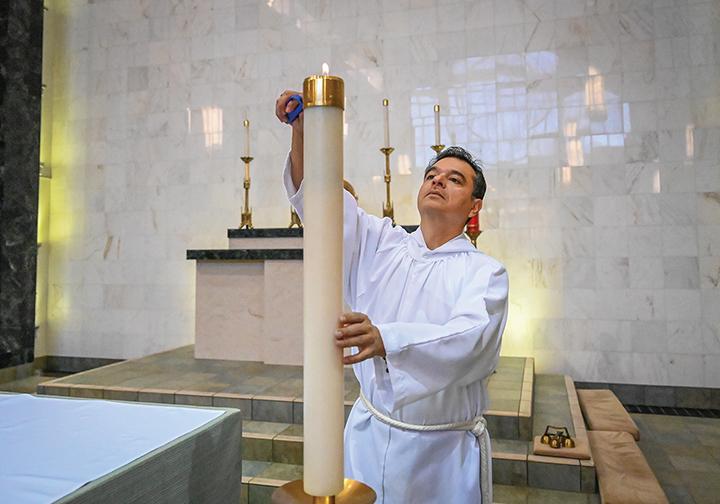
There are a few things that differentiate Cohort Five from those who came before them. The first is that their average age is in the 40s, younger than previous cohorts. Second, they have a longer aspirancy period — two years.
There’s one more thing. This is the most diverse cohort the archdiocese has ever had. Two men are Latino (from Mexico and Colombia) and their first language is Spanish, although they can also speak English. One man — John Lawrence — is from India and English is his second language as well. Another aspirant is from the Republic of Côte d’Ivoire (Ivory Coast) and his mother tongue is French. And one man, from Kansas, is deaf and communicates in American Sign Language.
Jaime Fuentes, an information science and technology institute lead professor at Ottawa University, was born and raised in Bogota, Colombia. He and his wife Paola came to the United States to pursue their education and careers. They’ve been in the archdiocese since 1997.
Like the other aspirants, Fuentes also grew up Catholic, and his family had a long tradition of producing vocations to the priesthood and religious life. His uncle was a priest, and he spent summers at the rectory where his grandmother was housekeeper. He did all sorts of little jobs for his priest uncle — which included serving Mass.
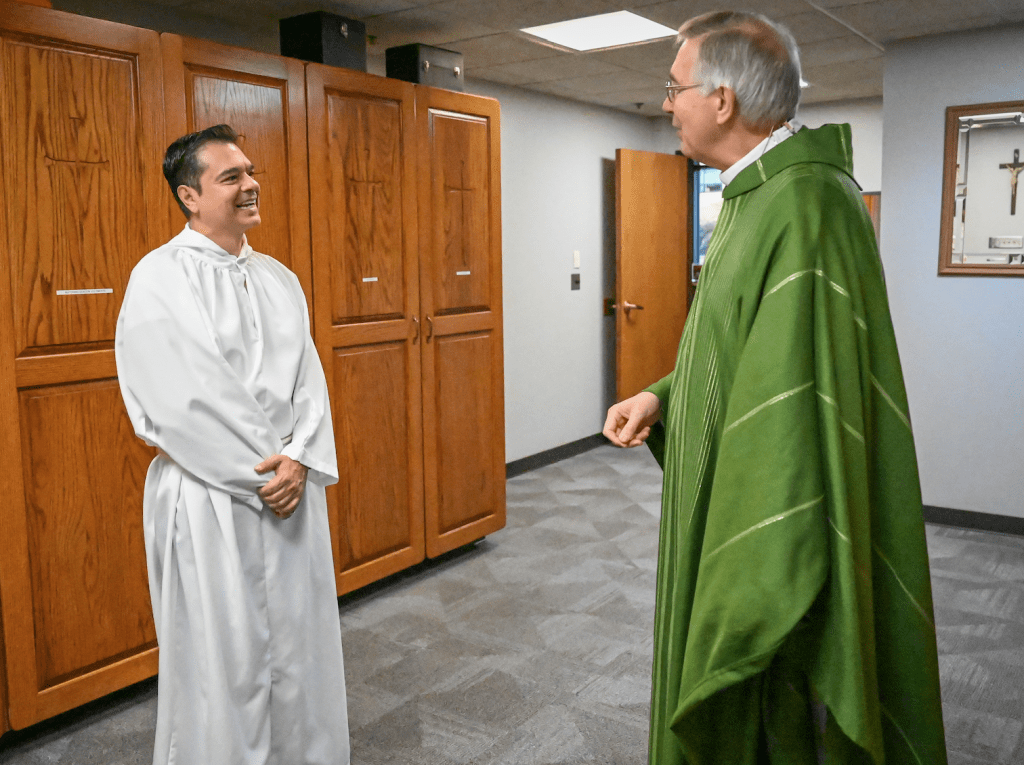
But the vocation bug didn’t bite him — or so he thought.
Many years later, as a member of Prince of Peace Parish in Olathe, he learned about the permanent diaconate.
“In the past few years, the Lord has been calling me in a different way,” said Fuentes. “Right now, I am fulfilling the sacrament of matrimony and family, and the Lord has really blessed me with a great family. Paola is an amazing wife and mother. But in the last five years, my wife and I have begun a spiritual journey. We are serving more in our parish and helping in different ministries.”
During eucharistic adoration, he asked the Lord how he could serve him better, and suddenly the permanent diaconate program came to mind. Also, people in the parish began to ask him if he was thinking of becoming a deacon. It seemed the Lord was steering him toward this, although he didn’t feel prepared.
Fuentes thinks that the diversity in Cohort Five makes it strong.
“In my experience, when you have exposure to different cultures,” he said, “you learn about how different we are but also how close and similar we are.
“Cohort Five is blessed by having this diversity. . . . It’s going to be a very good experience for everyone in the cohort. I think we have been very blessed by the Holy Spirit to have this diversity in the cohort.”

